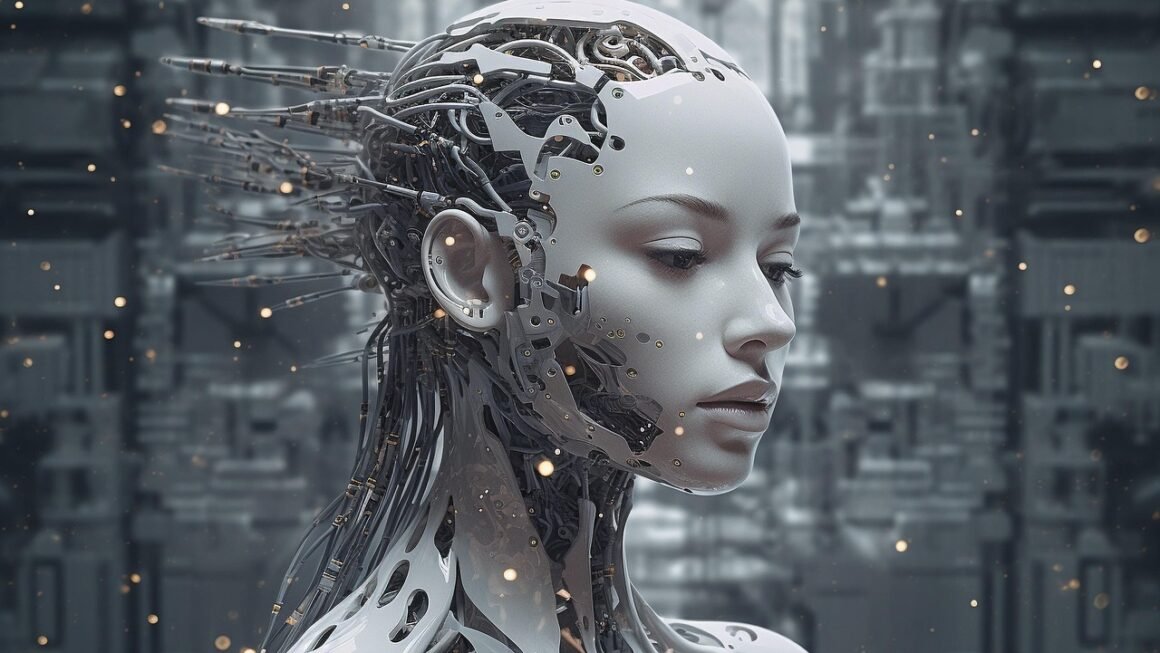Artificial intelligence (AI) is rapidly transforming our world, impacting everything from how we work and communicate to how we solve complex problems. From self-driving cars and personalized medicine to virtual assistants and predictive analytics, AI’s influence is growing exponentially. This blog post delves into the intricacies of artificial intelligence, exploring its various types, applications, benefits, and potential challenges, providing a comprehensive understanding of this transformative technology.
What is Artificial Intelligence?
Artificial intelligence, at its core, refers to the simulation of human intelligence processes by computer systems. These processes include learning, reasoning, problem-solving, perception, and language understanding. AI aims to create machines capable of performing tasks that typically require human intelligence.
Defining Artificial Intelligence
- Mimicking Human Intelligence: AI systems are designed to perform tasks that require human-like cognitive abilities.
- Learning and Adaptation: AI algorithms can learn from data and improve their performance over time without explicit programming.
- Problem-Solving: AI can analyze complex problems, identify patterns, and generate solutions efficiently.
Types of Artificial Intelligence
- Narrow or Weak AI: Designed for specific tasks, such as playing chess or recommending products.
Example: Netflix’s recommendation system is a narrow AI that suggests movies and TV shows based on your viewing history.
- General or Strong AI: Possesses human-level intelligence, capable of performing any intellectual task that a human being can. Currently, strong AI is still largely theoretical.
Example: A truly general AI could understand, learn, and apply knowledge across a wide range of domains, similar to a human.
- Super AI: Surpasses human intelligence in all aspects, including creativity, problem-solving, and general wisdom. Super AI remains entirely hypothetical.
AI vs. Machine Learning vs. Deep Learning
- Artificial Intelligence (AI): The broad concept of creating intelligent machines.
- Machine Learning (ML): A subset of AI that involves training machines to learn from data without explicit programming.
Example: Training an algorithm to identify spam emails based on patterns in the email content.
- Deep Learning (DL): A subset of ML that uses artificial neural networks with multiple layers (deep neural networks) to analyze data.
Example: Training a neural network to recognize faces in images using a large dataset of facial images.
Applications of Artificial Intelligence
AI is transforming various industries and aspects of our lives, offering new opportunities and solutions to complex problems.
AI in Healthcare
- Diagnosis and Treatment: AI can analyze medical images, assist in diagnosing diseases, and personalize treatment plans.
Example: IBM Watson Oncology uses AI to provide evidence-based treatment options for cancer patients.
- Drug Discovery: AI can accelerate the drug discovery process by analyzing large datasets of chemical compounds and predicting their efficacy.
- Robotic Surgery: AI-powered robots can assist surgeons in performing complex procedures with greater precision and minimal invasiveness.
AI in Finance
- Fraud Detection: AI algorithms can detect fraudulent transactions by identifying unusual patterns and anomalies in financial data.
Example: Banks use AI-powered systems to monitor credit card transactions and flag suspicious activities.
- Algorithmic Trading: AI can analyze market trends and execute trades automatically, optimizing investment strategies.
- Customer Service: AI-powered chatbots can provide instant customer support and answer common queries, improving customer satisfaction.
AI in Manufacturing
- Predictive Maintenance: AI can analyze sensor data from equipment and predict potential failures, allowing for proactive maintenance and minimizing downtime.
Example: Manufacturers use AI to monitor the performance of machinery and schedule maintenance before breakdowns occur.
- Quality Control: AI can inspect products for defects and ensure quality standards are met, improving production efficiency.
- Robotics and Automation: AI-powered robots can automate repetitive tasks, improving productivity and reducing labor costs.
AI in Transportation
- Self-Driving Cars: AI is enabling the development of autonomous vehicles that can navigate roads and make driving decisions without human intervention.
Example: Tesla’s Autopilot system uses AI to assist with driving tasks, such as lane keeping and adaptive cruise control.
- Traffic Management: AI can optimize traffic flow by analyzing traffic patterns and adjusting traffic signals in real-time.
- Logistics and Supply Chain: AI can optimize supply chain operations by predicting demand, managing inventory, and improving delivery routes.
Benefits of Artificial Intelligence
AI offers numerous benefits across various domains, improving efficiency, accuracy, and decision-making.
Increased Efficiency and Productivity
- Automation: Automates repetitive tasks, freeing up human workers for more creative and strategic roles.
- Optimization: Optimizes processes and resource allocation, leading to improved efficiency and cost savings.
- 24/7 Availability: AI systems can operate continuously without fatigue, providing round-the-clock service and support.
Improved Accuracy and Decision-Making
- Data Analysis: Analyzes large datasets quickly and accurately, identifying patterns and insights that humans may miss.
- Reduced Errors: Minimizes human errors in tasks that require precision and attention to detail.
- Objective Decisions: Makes data-driven decisions based on objective analysis, reducing bias and subjectivity.
Enhanced Customer Experience
- Personalization: Provides personalized recommendations and experiences based on individual preferences and behaviors.
Example: Amazon’s personalized product recommendations based on your purchase history.
- Customer Support: Offers instant customer support through chatbots and virtual assistants, improving customer satisfaction.
- Accessibility: Makes products and services more accessible to people with disabilities through assistive technologies.
Challenges and Ethical Considerations of AI
While AI offers significant benefits, it also presents several challenges and ethical considerations that need to be addressed.
Job Displacement
- Automation of Jobs: AI-powered automation may lead to job displacement in certain industries, requiring workers to acquire new skills.
Actionable Tip: Invest in training and education to adapt to the changing job market and acquire skills that are in demand.
Bias and Fairness
- Bias in Algorithms: AI algorithms can perpetuate and amplify biases present in the data they are trained on, leading to unfair or discriminatory outcomes.
Example:* Facial recognition systems that are less accurate for people of color due to biased training data.
- Ensuring Fairness: It is crucial to ensure that AI systems are fair and unbiased by using diverse datasets and implementing fairness-aware algorithms.
Privacy and Security
- Data Privacy: AI systems often require large amounts of data, raising concerns about data privacy and security.
- Security Risks: AI systems can be vulnerable to cyberattacks, potentially leading to data breaches and misuse of AI technology.
- Data Protection: Robust data protection measures and cybersecurity protocols are essential to mitigate these risks.
Ethical Concerns
- Autonomous Weapons: The development of autonomous weapons systems raises ethical concerns about the potential for unintended consequences and loss of human control.
- Transparency and Accountability: It is important to ensure transparency and accountability in AI decision-making processes to prevent misuse and promote responsible AI development.
Conclusion
Artificial intelligence is a transformative technology with the potential to revolutionize various industries and improve our lives in many ways. While AI offers numerous benefits, it is crucial to address the challenges and ethical considerations associated with its development and deployment. By promoting responsible AI practices, fostering collaboration between stakeholders, and investing in education and training, we can harness the power of AI for the benefit of society while mitigating potential risks. The future of AI is bright, and it’s up to us to shape it in a way that aligns with our values and promotes a more equitable and sustainable world.



